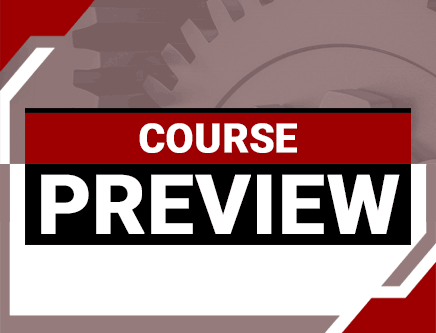HVAC Hacks #10: HVAC Cooling Tower and Condensers – Essential Tips and Rules of Thumb
In HVAC Hacks #10: HVAC Cooling Tower and Condensers – Essential Tips and Rules of Thumb, you'll learn ...
- Types of cooling towers and condensers
- Heat rejection principles, design tips, and operational strategies to boost performance, cut energy costs, and enhance system reliability
- How to size and select cooling towers and condensers that align with industry standards and regulations.
- Insights into water treatment, with techniques for managing corrosion, scaling, and microbial growth.
Overview
Struggling to choose the right heat rejection equipment for your HVAC system? Look no further! This course provides everything you need, from basics to best practices for cooling towers and air-cooled condensers.
Welcome to "HVAC Hacks," a comprehensive course series packed with essential tips, industry standards, and rules of thumb to simplify your HVAC design process. Explore the range of course modules tailored to meet your specific needs.
In this Course Module #10, you will gain a deep understanding of heat rejection principles, design tips, and operational strategies that will boost performance, cut energy costs, and enhance system reliability. You’ll learn how to size and select cooling towers and condensers that align with industry standards and regulations. Additionally, you’ll gain essential insights into water treatment, with techniques for managing corrosion, scaling, and microbial growth. This course includes several metrics and easy-to-understand “Rules of Thumb” guidelines based on experience and commonly accepted practices in the HVAC industry.
The course is ideal for HVAC engineers, designers, technicians, and anyone interested in mastering the design and operation of cooling towers and condensers, as well as water treatment in HVAC systems. No prior knowledge or experience in HVAC is required. Basic knowledge of physics, engineering, and mathematics is recommended.
Specific Knowledge or Skill Obtained
This course teaches the following specific knowledge and skills:
- Types of cooling towers and condensers
- Design considerations and best practices
- Material selection and maintenance
- Performance metrics and evaluation techniques
- Water treatment methods and principles
- Energy efficiency and sustainability strategies
- Safety and regulatory compliance
- How to evaluate and optimize cooling system performance.
- How to choose the right components and materials for cooling tower and condenser design.
- Proper water treatment methods for HVAC systems.
- Industry standards and regulations for safe and efficient HVAC operation.
- Energy-efficient and sustainable design strategies.
- How to troubleshoot common cooling system issues.
Certificate of Completion
You will be able to immediately print a certificate of completion after passing a multiple-choice quiz consisting of 40 questions. PDH credits are not awarded until the course is completed and quiz is passed.
| This course is applicable to professional engineers in: | ||
| Alabama (P.E.) | Alaska (P.E.) | Arkansas (P.E.) |
| Delaware (P.E.) | District of Columbia (P.E.) | Florida (P.E. Area of Practice) |
| Georgia (P.E.) | Idaho (P.E.) | Illinois (P.E.) |
| Illinois (S.E.) | Indiana (P.E.) | Iowa (P.E.) |
| Kansas (P.E.) | Kentucky (P.E.) | Louisiana (P.E.) |
| Maine (P.E.) | Maryland (P.E.) | Michigan (P.E.) |
| Minnesota (P.E.) | Mississippi (P.E.) | Missouri (P.E.) |
| Montana (P.E.) | Nebraska (P.E.) | Nevada (P.E.) |
| New Hampshire (P.E.) | New Jersey (P.E.) | New Mexico (P.E.) |
| New York (P.E.) | North Carolina (P.E.) | North Dakota (P.E.) |
| Ohio (P.E. Self-Paced) | Oklahoma (P.E.) | Oregon (P.E.) |
| Pennsylvania (P.E.) | South Carolina (P.E.) | South Dakota (P.E.) |
| Tennessee (P.E.) | Texas (P.E.) | Utah (P.E.) |
| Vermont (P.E.) | Virginia (P.E.) | West Virginia (P.E.) |
| Wisconsin (P.E.) | Wyoming (P.E.) | |


 Live support chat
Live support chat



